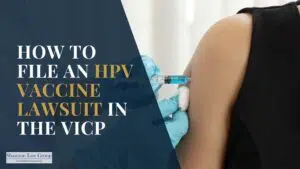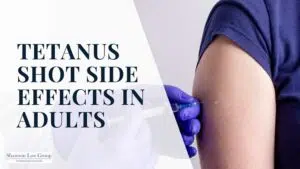
Traffic signs and lights can alleviate some of the confusion at an intersection. However, there are a still number of issues even if an intersection is equipped with traffic control devices. Driving through a traffic light is something drivers do so often that it might be easy to overlook some of the potential dangers.
Here are some tips on how to read traffic light signals while crossing through intersections in Illinois, whether you’re in the city of Chicago or driving in the country.
Green Light = Right of Away (Except When There’s a Pedestrian or Oncoming Vehicle)
The Illinois motor vehicle code says that:
Vehicular traffic facing a circular green signal may proceed straight through or turn right or left unless a sign at such place prohibits either such turn. Vehicular traffic, including vehicles turning right or left, shall yield the right of way to other vehicles and to pedestrians lawfully within the intersection or an adjacent crosswalk at the time such signal is exhibited.
A driver with a green signal has the right-of-way and may presume that cross-traffic will obey its own traffic signals. However, a motorist’s right-of-way at an intersection is not an absolute right, even when facing a green signal.
While the signal may be in the driver’s favor, he or she must still always proceed with caution and concern for the safety of others. For instance, if a driver sees another automobile approaching an intersection at a high rate of speed, that driver may not blindly proceed into the intersection in front of that automobile assuming that the other motorist will stop for the light.
Yellow Light = Your Right of Way Is Ending
The duty of care imposed when facing a yellow light is even greater because the driver must be aware that his or her right-of-way is ending. The Illinois motor vehicle code states:
Vehicular traffic facing a steady circular yellow or yellow arrow signal is thereby warned that the related green movement is being terminated or that a red indication will be exhibited immediately thereafter.
Whether entering an intersection on a yellow light is negligent is determined by examining:
- The speed of the vehicle
- The distance from the intersection
- The location of other vehicles; and
- Other factors such as weather and traffic conditions.
Cross-traffic does not have an unqualified right-of-way as soon as the light turns green. However, a driver entering an intersection on a yellow light must be aware that cross-traffic is about to proceed.
Even a car approaching a standing green light must proceed with care. The driver must recognize and guard against the possibility that the green light may turn yellow and then red, putting an end to his right to proceed through the intersection.
A driver in such a situation should not attempt to “beat” the light. Instead, it is a driver’s duty to drive at a careful speed and have his car under control in anticipation of the light changing.
Red Light = Stop (Except in a Few Situations)
The Illinois vehicle code states:
[V]ehicular traffic facing a steady circular red signal alone shall stop at a clearly marked stop line, but if there is no such stop line, before entering the crosswalk on the near side of the intersection, or if there is no such crosswalk, then before entering the intersection, and shall remain standing until an indication to proceed is shown.
This is a very basic concept: a driver facing a red light must stop until the light turns green and it is safe to proceed.
Exception 1: Green Left-Turn Arrow Turns Red
However, an exception to this general principle arises when a vehicle has proceeded into an intersection on a green light in anticipation of making a left turn. But the signal changes prior to completing that turn.
In this situation, the smooth and orderly flow of traffic requires that all vehicles lawfully within an intersection when a light change occurs should pass through.
A driver at a red light that changes to green must also be aware of this rule. That driver must make sure to allow any traffic that had proceeded into the intersection to clear before going.
Exception 2: Right and left turns on red
Other exceptions to remaining at a red light are the “right turn on red” and the “left turn on red” provisions in the vehicle code:
…vehicular traffic facing any steady red signal may cautiously enter the intersection to turn right, or to turn left from a one-way street into a one-way street, after stopping….After stopping, the driver shall yield the right of way to any vehicle in the intersection or approaching on another roadway so closely as to constitute an immediate hazard during the time such driver is moving across or within the intersection or junction or roadways…
Unless directed otherwise by a “No Turn on Red” sign, it is permissible for a driver faced with a red light to make a right turn after stopping, provided that traffic is clear and it is safe to do so.
To make a legal left turn on red, the vehicle must be on a one-way street and making a left-hand turn onto another one-way street in which traffic is flowing to the left.
Exception 3: Weather conditions and light malfunctions
Another issue that can arise with respect to traffic lights, particularly in the Midwest this time of year, is the weather. On occasion, traffic signals may become obscured by snow or ice, or may otherwise malfunction.
In that instance, the intersection should be treated as an all-way stop, with each vehicle coming to a complete stop and then ensuring it is safe before proceeding into the intersection.
All drivers should take care to keep a proper lookout and proceed with caution when approaching an intersection, even if that intersection is controlled with traffic signals.
Many accidents will be avoided if drivers stay aware of their surroundings, anticipate the actions of other drivers, and use common sense, rather than rely solely on traffic signals for guidance.
If you have been injured in a car accident at a collision, our lawyers can help you. Call us today at (312) 578-9501. We’ll review your case at no cost to you. We’re just a call or contact form away!
Schedule Your Free Consultation Today



